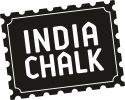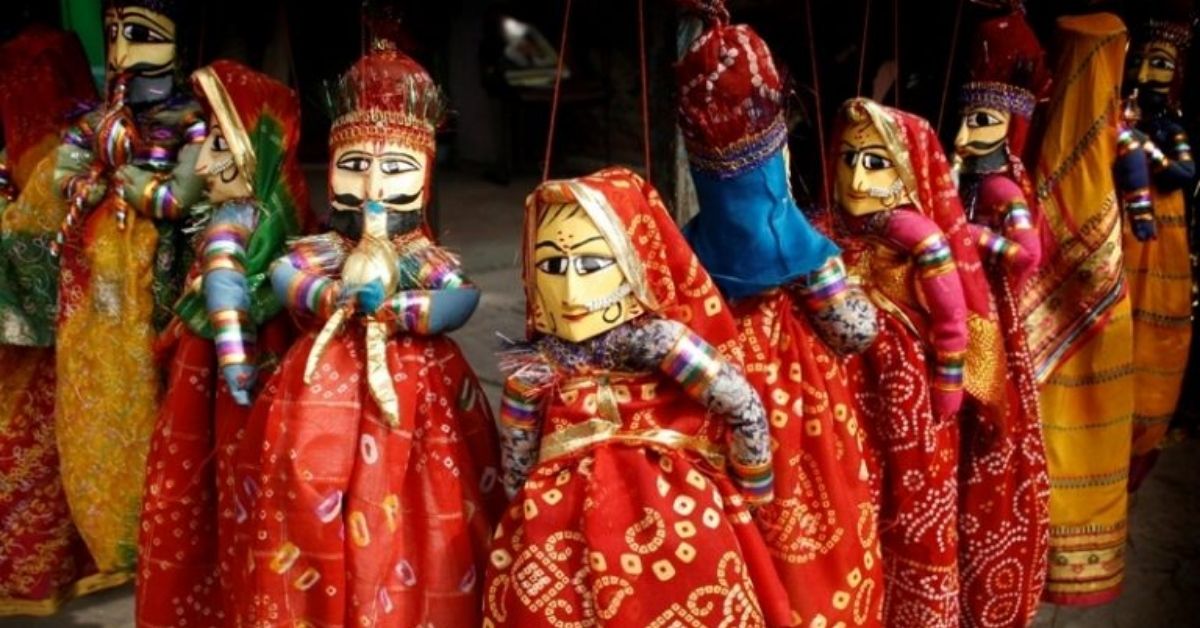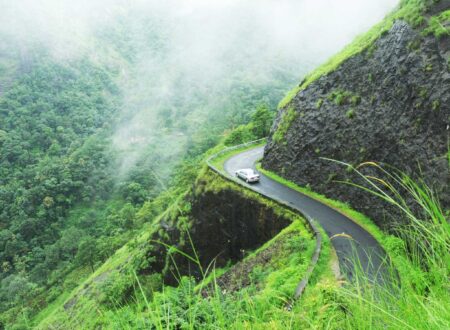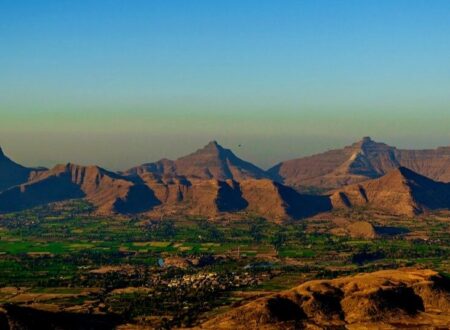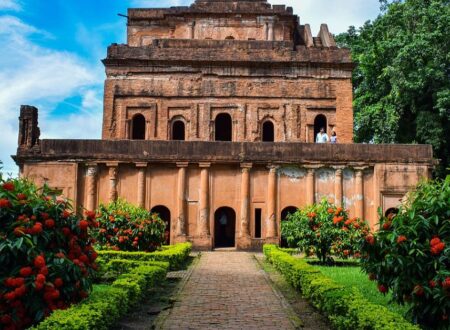Paying homage to the art form of puppetry which retells stories of Indian Mythology and Culture.

When was the last time you went to a fair where you enjoyed the magic of A puppet show? Or when was the last time you bought puppets or made them? If your answer is somewhere back in the good old days of the 90s then it explains how this art is slowly dying down today. We may not see our favourite stories by puppet masters anymore. But certain parts of India keep the magic of puppetry alive. It is important to keep these small art forms alive as they tell a tale of our culture and tradition. With this in mind, we explore the art of puppetry which is lost in transition today, in its home ground- India.
The Roots of Puppetry in India:
‘All the world’s a stage and all the men and women are merely players’ by Shakespeare. As a concept existed even before Shakespeare ever quoted it. The great Philosophers and sages of India were the many firsts who appreciated the art of storytelling. The art that a puppeteer possesses by comparing a puppeteer to the creator of the world who unfolds his stories. They create them and do not merely perform them. The earliest examples of this can be are in our Epics like Ramayana and Mahabharata. Here the Gods or narrators of the story play the role of a puppeteer while unfolding the reality of the same.

Puppetry is one of the most respected forms of Storytelling in India. As the mastery of a puppeteer leaves the spectators awestruck. The fields of Drama or Natyashashtra and Theatrical performances also treat the ‘Rangamanch’ (The Stage) as a divine space. The magic unfolds while the director of the Natak (Drama) is referred to as a ‘Sutradhar’ (the one who holds the strings).
Types of Puppetry in India:
Puppetry emerged as a form of traditional entertainment and as a form of storytelling that developed a sense of immense pride amongst the spectators regarding their Indian Roots. Let us now get to know the various types and forms of Puppetry that exist in India.
String Puppets:
The most common and famous form of puppetry is string puppetry. They are carved and made out of wood. The joints of the puppet connect with each other through strings. When pulled help the puppet move as the puppeteer would want to.
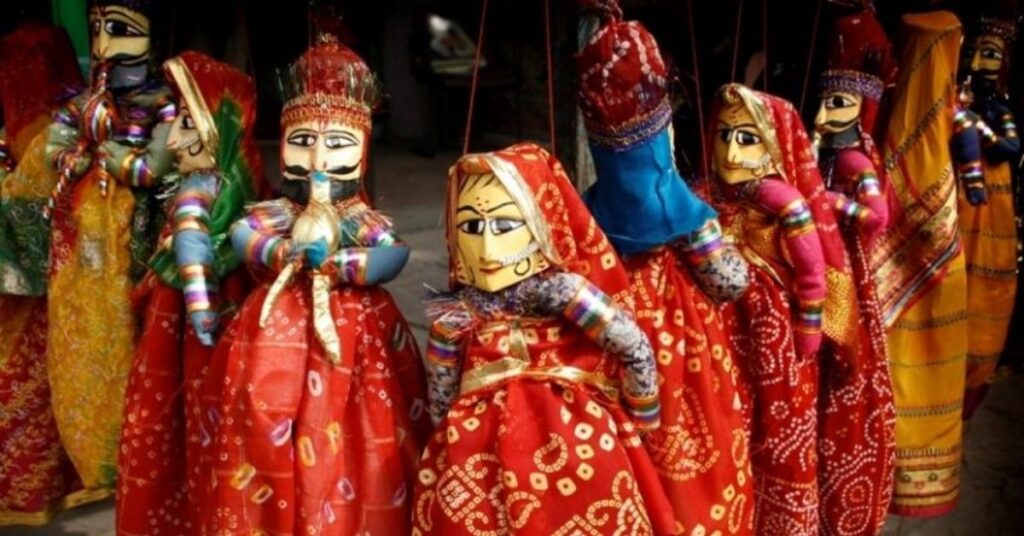
- Kathputli, Rajasthan: The most popular form of string puppets, kathputlis wear Rajasthani poshaks (traditional attire) and often narrate tales of Rajasthani Folklore. The strings are all managed by the puppeteer’s hands and are about 7-8 strings in total.
- Kundhei, Odisha: A unique characteristic of the Kundhei puppet is that they do not have legs but wear long skirts. These are the costumes that Odiya traditional Jatra wear.
- Gombeyatta, Karnataka: This form of string puppet usually always narrates the tale of Yakshagana which is traditional theatre folklore of Karnataka. The strings attached to the puppet all connect to prop that make it easier to handle them instead of using fingers like the kathputlis.
- Bommalattam, Tamil Nadu: One of the most distinguished and challenging forms of puppetry- Bommalattam uses both rod and string forms of puppetry as these puppets are the heaviest and tallest in weight and height. Some even measure 4.5 feet and weigh 10 kgs. The puppet master wears a ring on his head that has all the strings and rods connected to the puppet.
Shadow Puppets
These puppets are not physically in front of the curtains but instead are just casting their shadow on it. Likewise, light and the right kind of handling are crucial aspects of shadow puppets. These puppets are usually cutouts of leather-made translucent or flat one-dimensional characters that are mostly stuck on a stick that helps the puppeteer move them around.
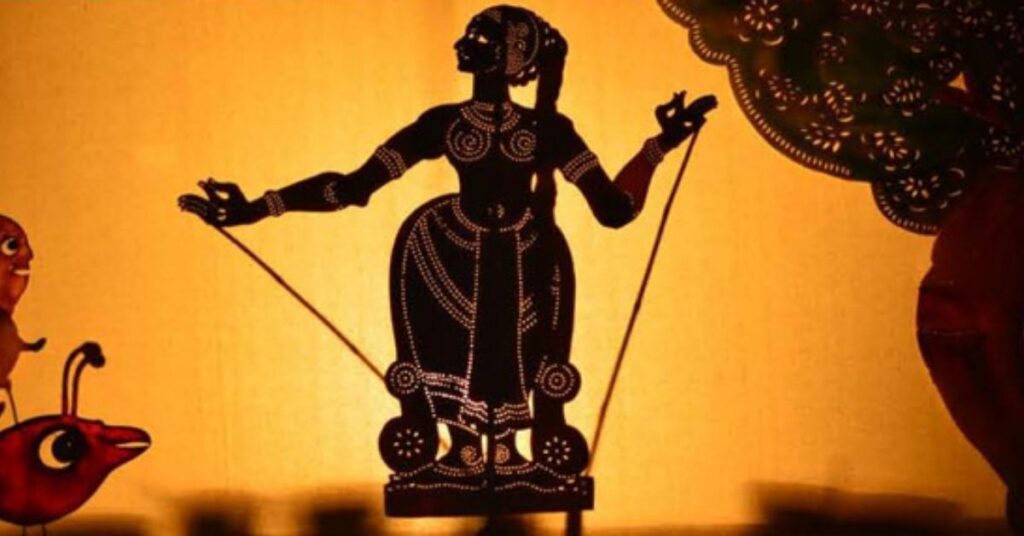
- Togalu Gombeyatta, Karnataka:Similar to Gombeyatta in string puppetry this is a shadow version of it. However, the characters differ in size based on their social statuses like kings and saints are larger and other normal people are smaller.
- Tholu Bommalata, Andhra Pradesh: Drawing from the Mahabharata and Ramayana Puranas. These shadow puppets are coloured on both sides and cast a colourful shadow.
- Ravanachhaya, Orissa: This form of shadow puppetry is difficult as it does not consist of any colours and neither do the puppets have any limbs. Single pieces of deerskin shadow puppets are in use and the precise knowledge of the art is a must for the puppeteer.
Rod Puppets:
Found in West Bengal and Orissa, Rod puppets are usually more rigid to move as there are no strings above. Instead, rods are used below the puppets.

- Putul Nautch, West Bengal: Originally used human-sized rod puppets in the region of Nadia in West Bengal are extinct today. The rod puppets found today are about 3-4 feet in height and have costumes like the regional traditional theatre performers.
- Yampuri, Bihar: These single piece wood made puppets of Bihar are known as Yampuri. They do not have any limbs.
Glove Puppets
What we see today in fairs and exhibitions is a traditional form of puppets of India. Glove puppets usually have solid heads made out of wood or paper mache. The rest of the body has a free-flowing cloth that makes the dress. Further, the puppeteer makes use of their hands to handle the puppet and does not use strings or rods. Glove puppets are popular in regions like Uttar Pradesh, Orissa and West Bengal.
- Pavakoothu, Kerala: A puppetry version of the Kathakali art form of Kerala, these glove puppets depict the same stories.
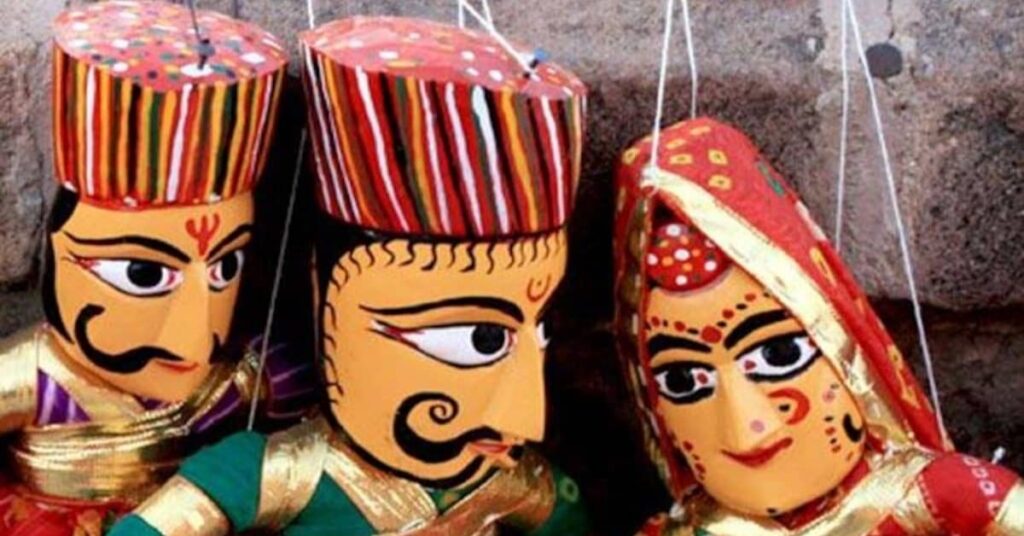
To put it all together, Puppetry as an art form is still a very important part of traditional entertainment. In regions like Orissa, West Bengal, Uttar Pradesh, Karnataka, Tamil Nadu, Kerala and Andhra Pradesh. Moreover, if you visit these states and cities of India, certainly ask about puppet shows in the vicinity. Surely watch one as they are a complete experience in themselves.
Also follow India Chalk on Instagram for more amazing travel content. You can share your travel story with us. Reach out to us on email at contact[at]ndiachalk[dot]com. This blog is curated by India Chalk and written by Megha Sapre.
